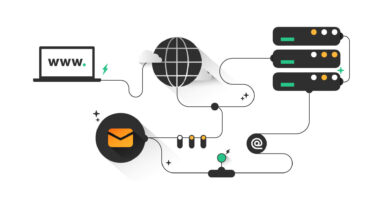Maximizing Patient Safety with Advanced Nurse Call Systems
In the healthcare industry, patient safety is of paramount importance. The ability to communicate effectively and respond quickly to patient needs can significantly impact overall care quality and safety. Advanced nurse call systems, particularly wireless nurse call systems, have emerged as essential tools in enhancing patient safety and improving the efficiency of healthcare delivery. This article will explore how these systems maximize patient safety, the key features that contribute to their effectiveness, and real-world examples of their impact in healthcare settings.
Understanding Wireless Nurse Call Systems
Wireless nurse call systems are communication platforms that enable patients to alert nursing staff when they need assistance. Unlike traditional wired systems, these wireless solutions utilize mobile technology, allowing for real-time communication between patients and caregivers. This flexibility not only enhances the speed of response but also promotes a more patient-centered care environment.
Advantages of Wireless Nurse Call Systems
- Immediate Communication: Wireless systems provide instant alerts to nursing staff, ensuring that patient requests are addressed promptly. This immediacy is crucial for maintaining patient safety, especially in emergency situations.
- Mobility and Flexibility: Nurses can receive alerts on their mobile devices or pagers, allowing them to respond quickly even when they are away from the nursing station. This mobility enhances the ability to address patient needs without delay.
- Scalability: Wireless systems can be easily expanded to accommodate growing facilities or changing patient needs. New call points can be added without extensive rewiring, making them adaptable to various healthcare settings.
- Integration with Other Systems: Many wireless nurse call systems can integrate with electronic health records (EHR), alarm systems, and other healthcare technologies, providing a more comprehensive approach to patient care.
Key Features that Enhance Patient Safety
To maximize patient safety, advanced wireless nurse call systems incorporate several key features that improve communication and response times.
1. Real-Time Alerts and Notifications
One of the standout features of wireless nurse call systems is their ability to send real-time alerts. When a patient presses a call button, an alert is transmitted immediately to the nursing staff, indicating the patient’s location and the nature of the request. This rapid communication allows nurses to prioritize and respond to urgent situations promptly.
2. Customizable Alert Prioritization
Advanced nurse call systems often come with customizable alert settings that allow hospitals to prioritize notifications based on urgency. For example, alerts from patients in critical condition can be marked as high priority, ensuring that they receive immediate attention. This feature is vital for maintaining patient safety, particularly in high-acuity environments like intensive care units.
3. Patient Feedback Mechanisms
Some advanced wireless nurse call systems include features that allow patients to provide feedback on their care experience. This feedback can help identify potential safety issues and improve the quality of care provided. By actively seeking input from patients, healthcare facilities can address concerns proactively and enhance overall safety.
4. Data Analytics and Reporting
Wireless nurse call systems often come equipped with data analytics tools that enable healthcare administrators to track response times, call frequency, and staff performance. By analyzing this data, hospitals can identify trends and areas for improvement, allowing them to implement strategies that further enhance patient safety.
5. Integration with Emergency Response Systems
A critical aspect of patient safety is the ability to respond effectively to emergencies. Wireless nurse call systems that integrate with emergency response systems can provide immediate alerts to security, code teams, or other relevant personnel when a crisis occurs. This integration ensures that help is on the way as quickly as possible.
Enhancing Patient Safety: Real-World Applications
Case Study 1: Urban Hospital Implementation
An urban hospital implemented an advanced wireless nurse call system to address concerns about patient safety and response times. The new system provided real-time notifications to nursing staff on their mobile devices, allowing them to respond quickly to patient requests. Following the implementation, the hospital reported a 40% reduction in response times and a significant increase in patient satisfaction scores. The data analytics features allowed administrators to monitor performance and make necessary adjustments, further enhancing patient safety.
Case Study 2: Long-Term Care Facility
A long-term care facility faced challenges with communication between staff and residents. They opted for a wireless nurse call system that featured customizable alerts and integration with their EHR. The system allowed for multiple call points in each resident’s room, ensuring that help was always within reach. As a result, the facility experienced improved resident engagement and safety, with fewer incidents of falls and medical emergencies.
Best Practices for Implementing Wireless Nurse Call Systems
To maximize the benefits of wireless nurse call systems and enhance patient safety, healthcare facilities should consider the following best practices:
1. Conduct a Needs Assessment
Before implementing a wireless nurse call system, conduct a thorough assessment of your facility’s needs. Identify the specific challenges you aim to address, such as response times, patient safety concerns, or integration with existing technologies.
2. Choose a Reliable Vendor
Select a reputable vendor with a track record of successful implementations in healthcare settings. Evaluate their customer support, training offerings, and system reliability to ensure a smooth transition.
3. Provide Comprehensive Training
Invest in comprehensive training for all staff members to ensure they are comfortable using the new system. Proper training can reduce confusion and enhance the overall effectiveness of the wireless nurse call system.
4. Encourage Patient Engagement
Encourage patients to utilize the nurse call system effectively. Educate them on how to use the system and emphasize the importance of reporting their needs promptly. This engagement fosters a culture of safety and communication.
5. Monitor Performance Metrics
Regularly monitor performance metrics, such as response times and patient feedback, to identify areas for improvement. Use the data collected to make informed decisions and implement changes that enhance patient safety.
Conclusion
Maximizing patient safety is a top priority for healthcare facilities, and advanced wireless nurse call systems are invaluable tools in achieving this goal. By enhancing communication, providing real-time alerts, and integrating with other healthcare technologies, these systems significantly improve response times and overall patient care. As hospitals continue to prioritize patient safety, investing in wireless nurse call systems will play a crucial role in delivering high-quality care and ensuring positive patient outcomes.Read More




